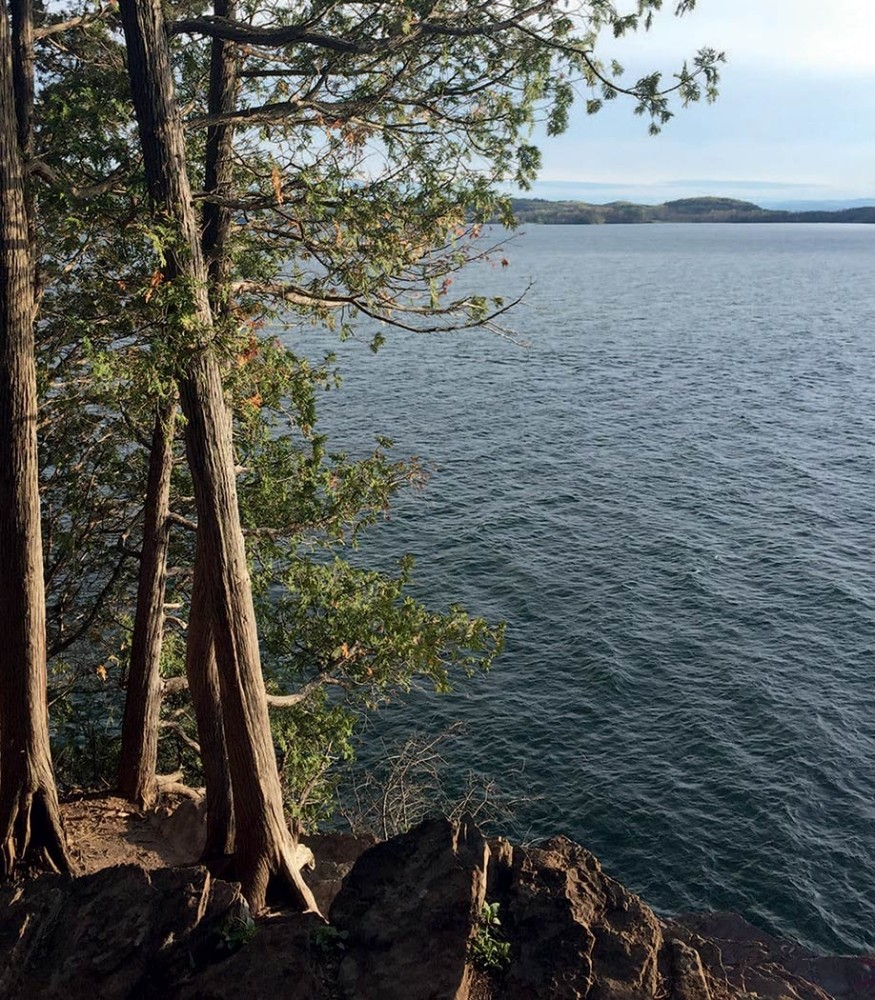Red Rocks Park in South Burlington, Vermont, takes its name from the iron-tinged Monkton Quartzite, formed some 500 million years ago. But above the old red sandstone are bands of younger limestone, topped by an even younger, thin layer of soil that is visible along the bluffs where the park meets the shore of Lake Champlain. The bluffs support a unique forest of red and white cedar and white pines, mixed with hemlock and hardwoods. Exposed to sharp winds coming off the lake, many of the trees are stunted and twisted.
Researchers from the USDA Forest Service Northern Research Station, concerned about the vulnerability of this rare ecological community to climate change and other stressors, recently assessed factors influencing tree growth in Red Rocks Park. With assistance from University of Vermont students, they cored 142 trees including northern white-cedar, eastern red cedar, eastern white pine, eastern hemlock, northern red oak, white oak, American beech, and white ash. They measured radial growth using tree rings to determine the age and productivity of each species, and compared this growth with historical moisture and temperature conditions and pollution inputs.
As noted by the researchers, who published their findings in Northeastern Naturalist in July 2023, the most dramatic change in Vermont’s climate has occurred during the winter months. Since 1960, winter temperatures have warmed 2½ times faster than average annual temperatures, and winter precipitation has increased overall, although less falls as snow. The cored trees – which included a range in ages, the oldest being a 386-year-old white oak – all had growth patterns that reflected sensitivity to temperature and precipitation, especially snow. Winter snowfall and snow duration were positively associated with growth for all eight species. The influence of spring snowfall varied by species, however, with oak, beech, and pine benefiting and other species being less affected.
Previous research on other species, such as sugar maple, has shown that snow buffers soils and protects roots from exposure to low temperatures and freezing. A future with less snow puts trees at risk. “Our data is the first to suggest that this may also be pertinent to additional species of hardwoods and conifers,” said study co-author Paul Schaberg. “Snow may be a particularly necessary insulator at Red Rocks Park because soils are shallow there, so roots are likely more uniformly exposed to low temperatures that can result in freezing injury.” In other words, the limestone bluff cedar–pine forests may be particularly vulnerable to warming and altered precipitation regimes projected for the Northeast and the Champlain Valley of Vermont.


